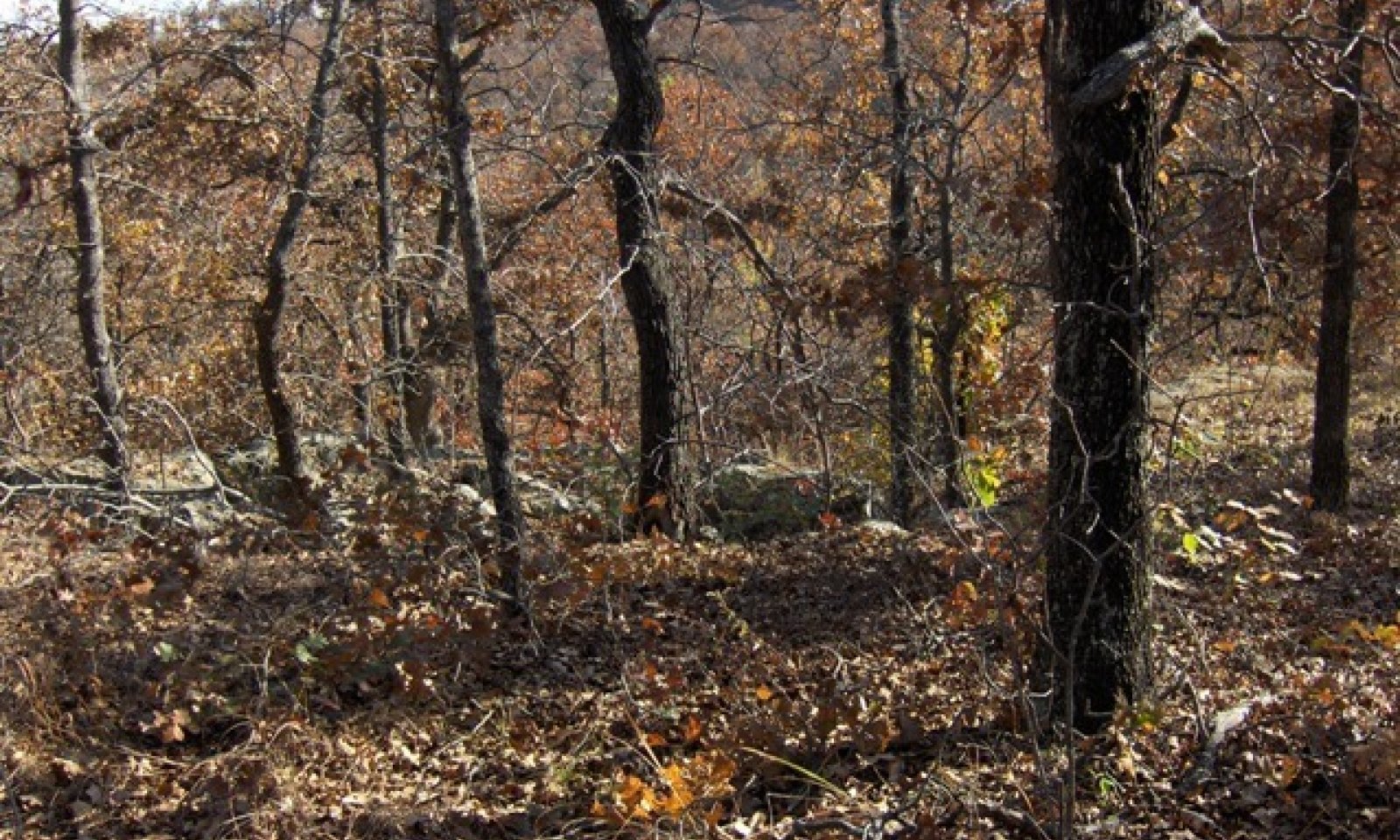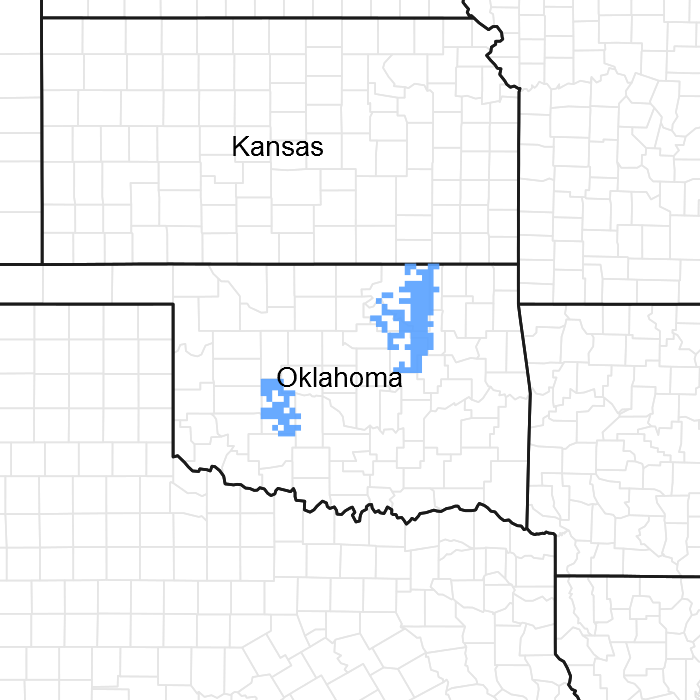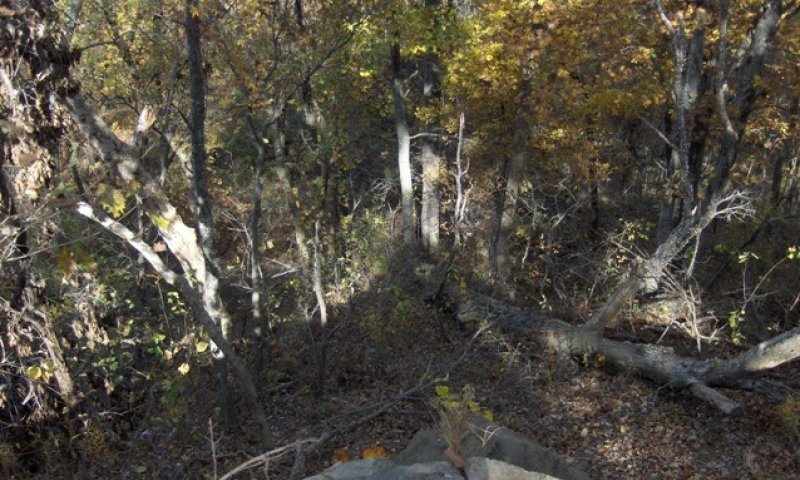Ecological dynamics
The reference plant community of the Savannah Breaks ecological site is a mixedgrass savannah and is a disturbance driven community. Tall grasses persist in pockets of deeper soil and coupled with midgrass species make up the majority of warm season grasses. The cool season grasses and grasslikes are a minor component. Numerous perennial forbs are present.
The ecological states of this site are dynamic and vary in relation to fire and rainfall. While adjacent sites are heavily influenced by large herbivore grazing impacts, the slopes and surface rock present on these sites inhibit most grazers. However, wildlife grazing/browsing impacts are sometimes present. Although these sites are not of great importance to a grazing operation, they can offer abundant wildlife habitat as well as other important ecosystem services.
The historical average fire return intervals for the region have been estimated between 2 to 5 years. This fire return keeps the fire-intolerant species restricted to areas protected from fire (i.e. rock outcrops, etc.). Therefore, the plant community is dominated by fire-tolerant species such as Post Oak, Blackjack Oak, and many herbaceous species endemic to the tallgrass prairie ecosystem.
The species in the reference community allowed for good water infiltration although some runoff is to be expected due to slopes and surface rock. As the woody canopy increases and the site transitions to the woody invasion state, the hydrology of the site is altered. The increased canopy intercepts most of the precipitation and leads to evaporative losses. Therefore, the remaining understory species have less available water for growth. However, with increased canopy and shading, understory species may have less evapotranspiration losses due to the altered microclimate.
One of the major species involved in the woody invasion is Eastern Redcedar. While it is quite possible that these trees were present in small extents within the reference state, they were restricted to rock outcrops and other fire protected areas. With the exclusion of fire, these trees can grow rapidly and outcompete other species for resources. Aside from crowding out herbaceous species, these trees may act as “ladder fuels” because of their growth form. When fire is once again introduced onto the landscape either by wildfire or prescribed fire, these trees can “ladder” the fire from surface level into the tree canopies causing a dangerous crown fire.
State 1
Savannah
In reference condition, this site is a fire-driven climax of Oak savannah with a tall grass understory. Average woody canopy cover is below 60 percent. Surface rock from cobbles to boulders may be up to 25 percent. The composition by functional group production consists of 40 percent tall grasses, 25 percent mid grasses, and 10 percent forbs and legumes. Total average herbaceous production can range from 500 to 1,800 pounds per acre. Some juniper may occur depending upon the last fire or in areas protected from fire due to rock outcrops. Species composition can vary somewhat depending on the present soil resources and depth to bedrock.
Due to the slope and amount of surface rock, these sites are rarely grazed by domestic livestock. In some areas, the sites themselves are uses as natural barriers between pastures eliminating the need of traditional fences. There is some potential use by goats if they are adapted to utilizing such landscapes. However, numerous wildlife species may utilize these sites for bedding, foraging, and escape cover.
Characteristics and indicators. Post Oak & Blackjack Oak with understory of native tallgrass species.
<60% woody canopy
2-5 year fire return
Resilience management. In the absence of fire, mid-story woody species including elm, hackberry, and eastern redcedar, and greenbriar will begin to encroach into the sites and shade out understory species. This creates a risk of transition to the Woody Invasion State.
Community 1.1
Post Oak/ Black Jack Oak
State 2
Woodland
The description for this plant community is derived from analysis of limited field data and professional consensus of range trained individuals.
This state is the result of the removal of fire from the ecosystem. Without fire, some fire-intolerant woody species have been able to grow and reproduce unchecked. This has resulted in an increase in canopy coverage and hindered the growth of the herbaceous understory of the reference state.
The understory woody browse, forbs, and legumes cannot persist as the woody mid-story takes over. Thus much of the wild life habitat value declines as the site transitions to this state.
Much of the hydrologic cycle has changed as the functional plants are the woody overstory. Some rainfall is trapped in the foliage of the overstory and evaporates but some also reaches the soil via stem flow. Without the herbaceous understory, the sight may be prone to increased runoff from overland flow.
Characteristics and indicators. Oak/Hickory Woodland with Hackberry, Elm, and Juniper encroachment.
Shade tolerant herbaceous plants.
>60% woody canopy
>5 year fire return
Resilience management. Tools that restore the energy flow back to these plants and restore the hydrologic cycle include an integrated approach using brush management and fire. It is possible to restore this plant community to something similar to the reference plant community but may be very difficult depending on remnant seedstocks and time since fire.
Transition T1A
State 1 to 2
In the absence of fire, mid-story woody species including elm, hackberry, and eastern redcedar, and greenbriar will begin to encroach into the sites and shade out understory species.
Constraints to recovery. This lack of fire or other brush management creates a risk of transition to the Woodland State.
Restoration pathway R2A
State 2 to 1
Tools that restore the energy flow back to these plants and restore the hydrologic cycle include an integrated approach using brush management and fire. It is possible to restore this plant community to something similar to the reference plant community but may be very difficult depending on remnant seedstocks and time since fire.






